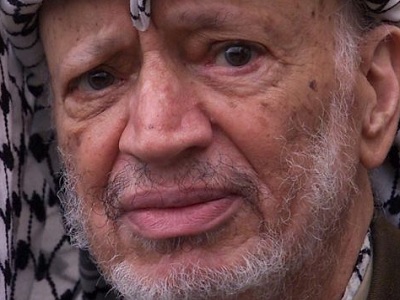
By Jamal Kanj
Thirteen years ago, I published my first article in a major US newspaper, San Diego Union Tribune. It was unwittingly published on the same day news came out of Paris that Yasser Arafat had passed away. The article wasn’t meant to be a eulogy but to introduce Arafat and his cause to readers who rarely read a Palestinian view point in the Zionist controlled US media.
The article was of the first time I had met Yasser Arafat in February of 1973. In the early morning hours of the previous night, I was jolted from my sleep by the rattle of guns and thunderous booms. Israeli commandos landed at the sea shores of a defenseless sleepy Palestinian refugee camp in north Lebanon. The Israeli military target was a vacant community clinic, but for a lonely sleeping unarmed night guard.
The public health center serving the poor was just meters from our home. The building structure was blown up over the unarmed guard. Israeli media spin which was reported by BBC, described the raid on the clinic in Nahr el Bared refugee camp as a preemptive strike against a military target.
The next day and while I played with other children on the small dirt road, two speeding jeeps headed in our direction. The vehicles swerved toward the heap of concrete, brakes squealed, tires skidded and dust billowed in the air.
The back doors flung wide open before the car stopped completely. Two men jumped out of the vehicle and ran along its side. A short man dressed in his trademark Kufiah, emerged from the swirling dusts hovering over the jeep.
We immediately recognized him as the leader of Fatah organization, Abu Ammar, as he was commonly known. I, along with other kids gathered around him to shake his hand. He was very gracious, and in no time, a large crowd from the neighborhood started to congregate and to chant “We sacrifice our blood and soul for Abu Ammar.” Abu Ammar led another chant, “We sacrifice our blood and soul for Palestine.”
He was very young at the time, and full of energy, unlike the last public photo of the feeble old man embarking on the helicopter for his trip to a Paris hospital. He died less than two weeks later.
Arafat lived a life of contradictions. Under his leadership, group of Palestinian intellectuals acquiesced to abandon their conflicting ideologies to form a national movement for the liberation of Palestine. He is credited with conceiving an ingenious simple idea called: National Liberation. This philosophy gave birth to a powerful political and military organization, harakat Fatah.
Shortly thereafter, Fatah seized leadership of the Palestine Liberation Organization (PLO). Inspired by the same National Liberation philosophy, the PLO grew more independent and like Che Guevara beret, Arafat’s Kufia became a new symbol for revolution.
Subsequently, Arafat addressed the U.N. General Assembly in 1974 and for the first time, the world had a chance to hear directly from the leader of Palestine. Following his U.N. visit, more nations recognized and established PLO offices in their capitals than have recognized the state of Israel.
Arafat led the Palestinians with strong hand and was unwilling to share power. To the chagrin of many Palestinians and Arab governments alike, Arafat accentuated Palestinian nationalism over pan Arabism and secularism over religion.
Irrespective of whether one would agree or disagree with Arafat during the many tumultuous years of his leadership to the PLO, and later the Palestinian Authority, Arafat became an icon of his people’s struggle for statehood.
On the thirteenth anniversary of his death, Arafat shall be remembered as a master tactician who left short of liberating his people from a malicious occupation. Israel’s intransigence and confiscation of land for the benefit of Jewish only colonies undermined the Oslo Agreement and stripped Arafat’s ability to transform the National Liberation philosophy into nation building.
Arafat’s strong leadership qualities left behind much more to be desired in Palestine, today.
– Jamal Kanj (www.jamalkanj.com) writes regular newspaper column and publishes on several websites on Arab world issues. He is the author of “Children of Catastrophe,” Journey from a Palestinian Refugee Camp to America. He contributed this article to PalestineChronicle.com.




